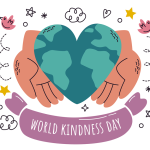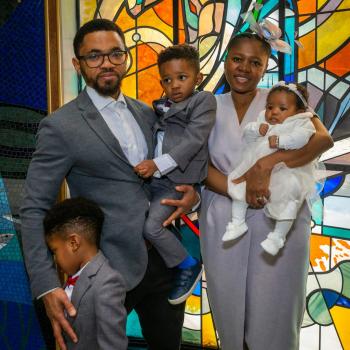At the center of every hurricane, there’s a calm, tranquil eye. At the heart of every troubled soul, there’s a person of peace. Of course, to get to the eye, you’ve got to weather the storm. To find the person of peace, you must attend to the restless soul.

A System that Failed Him
This week, I met a new client for the first time. As an intensive case manager, I work with folks who are a little too involved with the criminal justice system. My clients are the ones that many would consider the “bad guy,” mostly people with drug, sex work, and other low-level charges. This new client fits that description and carries on his shoulders the weight of a system that has failed him. He suffers from mental health disorders, as well as a personal history that directs him toward trouble instead of away from it. Society hasn’t given him the same opportunities that many of us receive. After being failed by systems that should have protected him, he was quite angry by the time I met him.
Talk to the Problem, or Talk to the Person
After I sat with him for two hours, I wish I could say that social work solved all his problems. It didn’t. During those hours, he snarled at me, shrank back, made angry fists, cat-called a woman walking by, and vomited profanity. But also, during those hours, I was able to take care of one (just one) of the many needs he had. When we parted, he told me, “You done more for me today than all the rest of them m-fers.”
I’m not saying that I saved the day. I didn’t. But maybe I kept the day from sucking for him as much as it usually does. Maybe I got one degree closer to gaining his trust. To do this, I had to decide whether I would talk to the problem or the person.
He Was a Problem to be Solved
You see, all his life, this gentleman had been considered a problem. First, he was the problem kid in school. Then he was that “addict,” or that “homeless man” or that “criminal.” People defined him by these words, so whenever they addressed him, they spoke to the issues, not to the man. He wasn’t a person to be loved and respected—he was a problem to be solved.
A Storm of Anger
You’d be angry, too, if that’s how society labeled you. Then your anger would make it worse, and everybody would be afraid of you, and they’d avoid you, and they wouldn’t hire you or give you opportunities they’d give to everyone else. And sooner or later, you’d get so mad about that, you’d blow up. But your explosion wouldn’t be seen as the “model citizen’s” temper tantrum. No—you’d likely be arrested for yours, whereas others might be rewarded by a store discount. So, your storm would keep on building, like a hurricane approaching land.
Look Me in the Eye
This was the tempest I met on the street when I fist-bumped my client at our first meeting. I decided in that moment to talk to the eye, instead of the storm. Looking someone in the eye means more than gazing into their cornea, pupil, and iris. It means finding that peaceful spot that lies at the center of their turmoil. Just like a hurricane, everyone has an eye. “Look me in the eye,” said my client’s storm. And it took a while to find. I had to get past the hurt, the pain, the fear, the distrust. I had to get past even the adult and find the sleeping child within. Because this fearful man is somebody’s baby. I just had to look him in the eye, to find the child.
Finding My Center, to Locate His
To do that, I had to find my own center. Like attracts like, so peace finds peace. This is how Jesus calmed storms—not by coming at them from a place of fear but by speaking from his peace. Jesus’ peace cast out demons, fed those who were hungry, and healed the hurting. If I’d met my client’s unrest from a state of turmoil myself, I would have only seen the squall and responded with a tempest of my own. But with peace at my center, I could find his tranquil core, even if all he wanted to show me were the spiraling arms of his hurricane.
Everyone has a tempestuous person in their life. It’s your choice. You can experience those people as the gale they want to portray. Or you can find your own center, locate their place of inner balance, and meet them there. “Look me in the eye,” says the storm. “I’m a hurricane—but won’t you find my place of peace?”
For other articles on homelessness, check out my other writing:
- How To Be A Giveasheetmotherfather
- Jesus And Trauma-Informed Care
- What Jesus Said To The Homeless Man
- “I Think I Might Not Die Now”
- Was Jesus Homeless? Yes, No, And Kind Of
- Jesus And Drug Decriminalization: Help Instead Of Handcuffs
- Strays, Haircuts, And The Golden Rule














